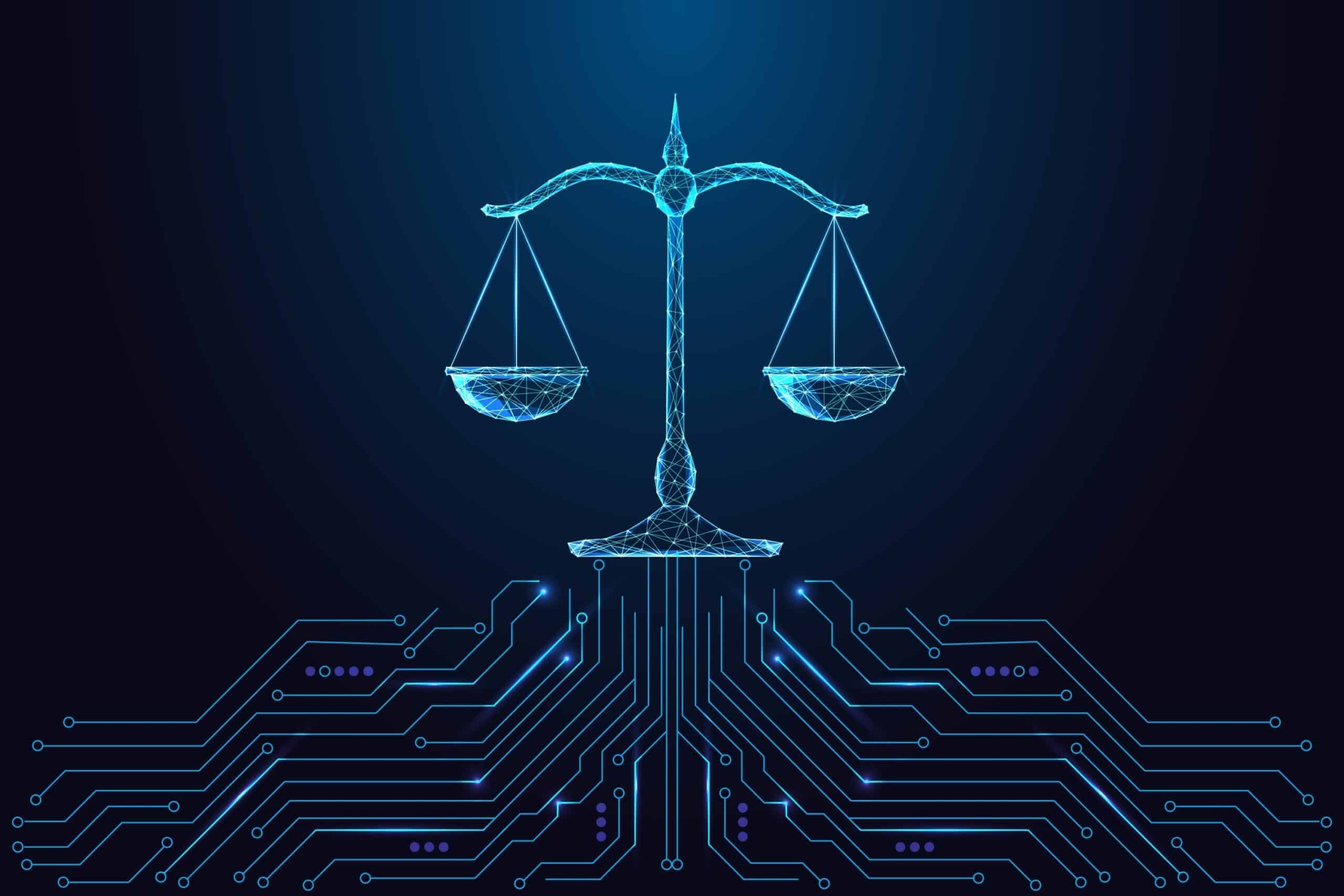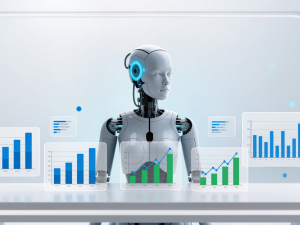AI moved into classrooms faster than anyone expected. Schools adopted it for grading support, personalised learning, attendance tracking, behaviour monitoring, and even exam proctoring. For a while, it felt like the perfect upgrade to digital learning, efficient, scalable, and always available.
But with that speed came a problem: the rules weren’t ready.
By 2024–2025, governments across the US, EU, and Asia realized that education needs stronger protection than any other sector. You’re dealing with minors, sensitive personal data, academic futures, behavioural information, and long-term digital records. When AI makes a wrong prediction in finance, it loses money. When it makes a wrong prediction in a classroom, it can change a child’s learning path.
That’s why the world is now entering a new phase, one where AI in education isn’t just about innovation; it’s about ethics, safety, and accountability.
New laws are reshaping how schools use AI tools. Instructors are being asked to rethink what “responsible AI use” means inside a classroom. And EdTech companies can’t just build features anymore; they have to build trust, transparency, and explain ability.
What follows is a look at the major global regulations that are now governing AI in education and what they mean for digital learning going forward.
Why Are Governments Suddenly Regulating AI in Classrooms?
AI didn’t become a problem, it became powerful. That’s the real reason regulations arrived so quickly.
For years, schools used harmless digital tools: learning apps, attendance trackers, online quizzes. But as AI systems grew more sophisticated, they started influencing decisions that had real consequences. Tools began predicting student performance, flagging “risky behaviour,” grading assignments, tracking emotions through webcams, and monitoring exam integrity. Suddenly, algorithms weren’t assisting teachers, they were shaping academic futures.
And that’s where governments stepped in.
The biggest concern was student data. AI models don’t just analyze data; they learn from it, store patterns, and sometimes keep more information than schools realize. When minors are involved, this becomes a massive privacy issue. Add facial recognition, voice recordings, behavioural data, and location tracking, and the stakes rise even higher.
Another concern was bias. If an AI model misreads handwriting, misunderstands accents, or misinterprets cultural behaviour, its judgments can unfairly penalise students. Governments recognised that learning environments need stronger guardrails than typical commercial applications.
Finally, there was accountability. When an AI system makes a mistake, who is responsible? The teacher? The school? The EdTech vendor? Regulations emerged to clarify this and ensure a human remains in control, especially for grading, admissions, and behavioural assessments.
In short, AI didn’t break the classroom, it outgrew it. And the global response now is about making sure innovation continues without compromising fairness, safety, or the well-being of students.
What the EU AI Act Means for Schools and EdTech
The EU AI Act is the strongest and most detailed education-focused AI regulation in the world right now, and its impact is massive. For European schools and EdTech companies, it doesn’t just set guidelines, it rewrites the rules of how AI is allowed to operate inside a classroom.
At the center of this law is the idea that educational AI systems can’t be treated like normal software. Anything that influences grades, admission decisions, behavioural scoring, or learning pathways is classified as “high-risk.” And high-risk tools must follow strict standards before they can be used in schools.
The first requirement is absolute transparency. Students, parents, and teachers have the right to know when AI is being used, what it is analysing, and how its decisions are made. No hidden algorithms, no silent data tracking, no black-box grading tools. Every system must explain itself clearly.
Another major rule is bias prevention. The EU requires training datasets to be monitored for accuracy, fairness, and representativeness. If an AI model grades essays by favoring a certain writing style or misinterprets accents in oral exams, the company behind it is held accountable. This pushes EdTech firms to rethink how they build and test their products.
There’s also the mandate for human oversight. Even the most advanced AI in Europe cannot make final decisions on academic performance or student behaviour. A teacher must always have the authority to review, override, or decline the AI’s suggestions. In practice, this protects students from automated misjudgements and keeps educators in control.
For EdTech companies, the Act introduces a new level of responsibility. Tools must meet safety, privacy, and fairness standards before they can enter classrooms. Companies now need compliance teams, transparent design processes, and extensive documentation to prove that their AI follows the law.
For schools, the Act brings reassurance and work. They must update their policies, train staff on ethical AI use, evaluate classroom tools carefully, and create clear communication channels for students and parents.
The big takeaway? The EU isn’t slowing down AI in education. It’s making sure AI grows in a way that reinforces trust, protects children, and improves learning without taking control away from humans.
What the US Guidelines Say — Privacy, Oversight, and Human Control
In the United States, the conversation around AI in classrooms looks very different from the EU but just as important. Instead of a single sweeping law, the US approach is driven by federal guidance, existing privacy protections, and strong expectations around educator responsibility.
At the core of the US policy framework are three pillars: privacy, equity, and human oversight. These aren’t suggestions. They’re the standards schools must meet before approving any AI tool for teaching, grading, or student support.
Privacy comes first. The US Department of Education makes it clear that AI tools must comply with FERPA, the country’s strongest student data-protection law. That means AI systems cannot collect unnecessary information, cannot reuse student data without permission, and must protect every file, score, and behavioural insight they process. For schools, this pushes them to scrutinize AI vendors far more closely before signing any contract.
The second principle, equity, is becoming increasingly important. AI systems are only useful if they work fairly for all students regardless of race, language, disability, or background. The US guidelines warn schools that biased AI tools could widen learning gaps or misrepresent student performance. This forces districts to test AI tools carefully, monitor how students from different demographics are affected, and intervene quickly when patterns look skewed.
Then there’s human oversight arguably the strongest requirement in the US context. Educators must remain the ultimate decision-makers. AI can support instruction, help with administrative tasks, and even suggest personalized learning paths, but it cannot replace human judgment. Teachers are expected to understand how the AI works, monitor its suggestions, and always apply professional discretion before acting on its insights. This requirement also pushes schools to train teachers, not just students, in AI literacy.
For EdTech companies, the US approach is a reminder that innovation alone isn’t enough. They need transparent data policies, explainable AI features, and user-friendly controls that make oversight simple rather than burdensome. Tools that ignore these expectations will struggle to gain school approvals.
Overall, the US isn’t trying to limit how much AI is used in classrooms. Instead, it’s building a system where AI enhances teaching without compromising student privacy or teacher authority. It’s about balance innovation with guardrails, efficiency without overreach, and digital learning that puts humans firmly at the centre.
Asia’s Approach — Innovation-First, With Ethical Frameworks Developing Quickly
Across Asia, the mindset toward AI in education is shaped by a mix of ambition, rapid digital expansion, and long-term national strategies. Unlike the EU which leads with strict regulation or the US, which prioritises privacy and oversight, many Asian countries are taking an innovation-first route. They want students to use AI, build with AI, and eventually lead the global AI workforce.
But that doesn’t mean ethics and safety are ignored. Instead, the region is building its guardrails in parallel with growth, rather than before it.
Take India, for example. The National Education Policy (NEP) 2020 didn’t just suggest digital literacy, it positioned AI as a foundational skill. Schools are rolling out AI curriculum from early grades, students participate in national AI innovation challenges, and teachers are trained to incorporate AI tools into STEM subjects. At the same time, India is actively drafting stronger data protection laws and working toward ethical AI frameworks that address bias, fairness, and student safety. It’s a dual track: encourage innovation now, build regulation alongside it.
Japan follows a similar direction, though with a sharper focus on societal impact and workforce readiness. Japanese schools use AI for personalised learning, language support, and administrative automation. The government encourages EdTech pilots and industry–school collaborations, but it also emphasises transparency and human agency. The goal isn’t just efficiency, it’s preparing students for a future where AI and robotics are part of everyday life, academically and economically.
Then there’s China, which takes a more centralised approach. AI is deeply embedded in classrooms from adaptive learning platforms to intelligent tutoring systems and an AI curriculum is mandatory in many regions. Yet China is also enforcing strict limits, such as exam-period AI blackouts and extensive oversight for student data. Their model shows how a nation can aggressively promote AI education while still recognising the need to protect the integrity of high-stakes learning environments.
Across Asia, the trend is clear: move quickly, innovate boldly, but keep developing ethical boundaries as usage grows. This makes the region one of the most dynamic testing grounds for AI in education. Schools gain access to advanced tools faster, EdTech companies can experiment more openly, and students experience technology that’s often years ahead of global norms.
However, the challenge lies in consistency. With regulations still taking shape, schools and companies must interpret guidelines themselves, making it even more important to prioritise transparency, fairness, and safety from the start.
What These Global Shifts Mean for Schools, Teachers, and EdTech Companies
All these new laws and ethical frameworks are reshaping digital learning in very real, practical ways. For schools, the era of casually adopting AI tools is over. They now have to ensure every platform they use respects student privacy, avoids harmful bias, and keeps human judgment at the centre of important decisions. This means stronger vetting processes, clearer consent forms, and more transparent communication with parents and students. Schools must also rethink how AI fits into teaching not as a replacement for educators, but as a support system that frees them from repetitive tasks so they can focus on mentoring, guiding, and teaching.
For teachers, the responsibilities are shifting too. They’re no longer just subject experts; they’re becoming digital decision-makers. They have to understand what an AI tool does, how it uses data, what its limitations are, and when to step in if something feels off. This requires new digital competencies not in coding or engineering, but in judgment, awareness, and ethical use. Teachers need to know how to explain AI’s role to students, how to maintain fairness during assessments, and how to recognize when a tool may produce biased or inaccurate results.
EdTech companies are under the most pressure. They’re facing a world where rules differ across continents, yet they’re expected to build products that feel simple and safe everywhere. This means designing tools with transparency built in, offering clear explanations of how algorithms work, and ensuring that any AI-powered feature supports rather than replaces educators. Companies now need strong data governance, bias-prevention systems, and privacy-first development practices. Those who can’t meet these expectations will struggle to earn school trust or enter regulated markets like the EU.
But there’s a positive side too: clear rules create clearer opportunities. Companies that build ethical, compliant, teacher-first AI tools will find themselves far ahead of competitors. Schools that adapt early will offer safer, more effective AI-powered learning environments. And teachers who understand how to use AI responsibly will become essential to the next chapter of digital education.
The Future of AI Governance in Education — Where This Is All Heading Next
AI in education is entering a phase where guardrails and innovation will grow side by side. The last few years were about adoption schools experimenting with AI grading tools, adaptive learning systems, classroom chatbots, plagiarism detectors, and automated content creation. The next few years will be about refinement, responsibility, and long-term stability.
Regulations in the US, EU, and Asia are pushing the world toward a shared idea: AI must serve learners, not the other way around. That means schools can expect stricter rules around how student data is collected and stored, clearer standards for transparency, and far more scrutiny of tools that claim to “evaluate” students. The age of hidden algorithms is ending. The future belongs to systems that explain what they’re doing, why they’re doing it, and how teachers can stay in control.
On the teaching side, AI will likely become a core professional skill not as an add-on, but as part of everyday practice. Lesson planning, content creation, differentiated instruction, administrative tasks, and early alerts for struggling students will all rely on AI-assisted workflows. Teachers who know how to supervise these tools, correct them when needed, and use them ethically will be the ones shaping modern classrooms.
For schools and districts, governance will become an ongoing responsibility rather than a one-time policy. Regular audits of AI tools, annual training for teachers, student data protection checks, and communication with parents will become standard procedures. Education systems that invest in this structure early will be better positioned to use AI confidently and safely.
EdTech companies will face a world where being “AI-powered” isn’t enough. They’ll need to demonstrate trustworthiness through bias testing, transparency reports, human oversight features, and region-specific compliance. This shift will weed out low-quality tools and elevate companies that build responsibly from the ground up.
Ultimately, global AI governance is steering education toward a healthier balance: innovation with accountability. If done well, AI will strengthen learning, making classrooms more personalized, teachers more supported, and students better equipped for a digital future without compromising safety, fairness, or human judgment.
Conclusion
AI in education is no longer the “future” it’s the present, and global regulations are shaping how responsibly it will grow from here. The US, EU, and Asia may have different approaches, but the message is the same everywhere: AI can support learning, but it must protect students, respect privacy, and keep teachers in control. These new laws are pushing schools to rethink how they choose digital tools, how they manage data, and how they prepare educators to supervise AI instead of relying on it blindly.
For instructors, this shift means developing stronger digital judgment knowing when AI adds value, when it oversteps, and when its decisions need human correction. For EdTech companies, it means designing tools that are transparent, fair, compliant, and easy for teachers to oversee. And for students, it builds a learning environment where AI can personalize lessons, improve access, and lighten administrative burdens without compromising safety.
As AI becomes more deeply embedded in classrooms, the goal isn’t to replace human teaching, it’s to enhance it. Smart governance ensures that innovation continues, but with guardrails that protect the people at the centre of learning. Platforms like Ascend Education are already evolving with this landscape by offering ethical, well-structured IT training that prepares learners to navigate both the opportunities and responsibilities of AI-driven education.
The road ahead is about balancing combining the power of AI with the wisdom of educators, supported by policies that make digital learning fair, safe, and meaningful.
FAQs
1. Why are governments creating new AI ethics laws for classrooms?
Because AI tools are now involved in grading, monitoring, and personalizing learning. Governments want to ensure these systems don’t introduce bias, misuse data, or replace critical human judgment.
2. Are AI-powered tools still allowed in schools after these regulations?
Yes but with more oversight. Tools must be transparent, safe, privacy-compliant, and supervised by teachers rather than allowed to make independent decisions.
3. How will these new rules affect teachers?
Teachers will need stronger digital literacy, better training on AI tools, and clear guidelines on when and how to use AI. The regulations actually strengthen teacher control, not reduce it.
4. What do these laws mean for EdTech companies?
Companies must redesign AI features to meet strict transparency, fairness, and privacy standards. Tools that can’t meet these requirements may be restricted or banned.
5. How will students benefit from these regulations?
Students get a safer, more transparent learning environment. These rules protect their data, reduce algorithmic bias, keep humans involved in major decisions, and ensure AI supports learning instead of dictating it.






